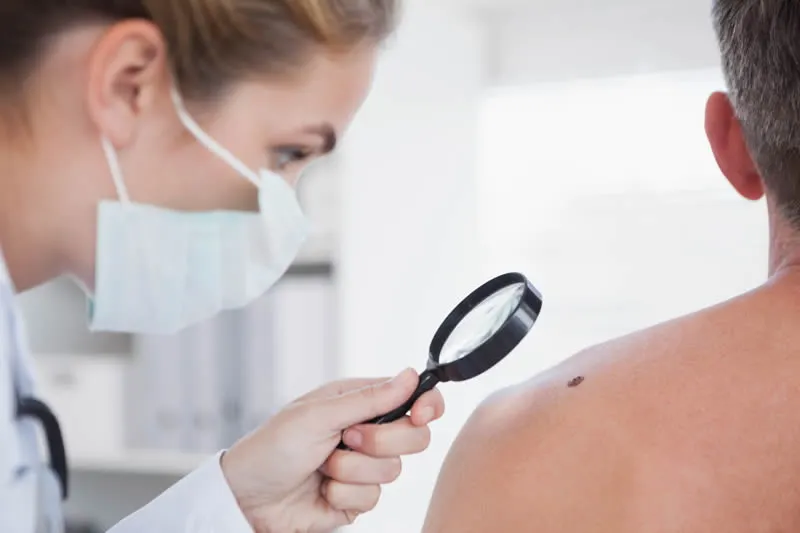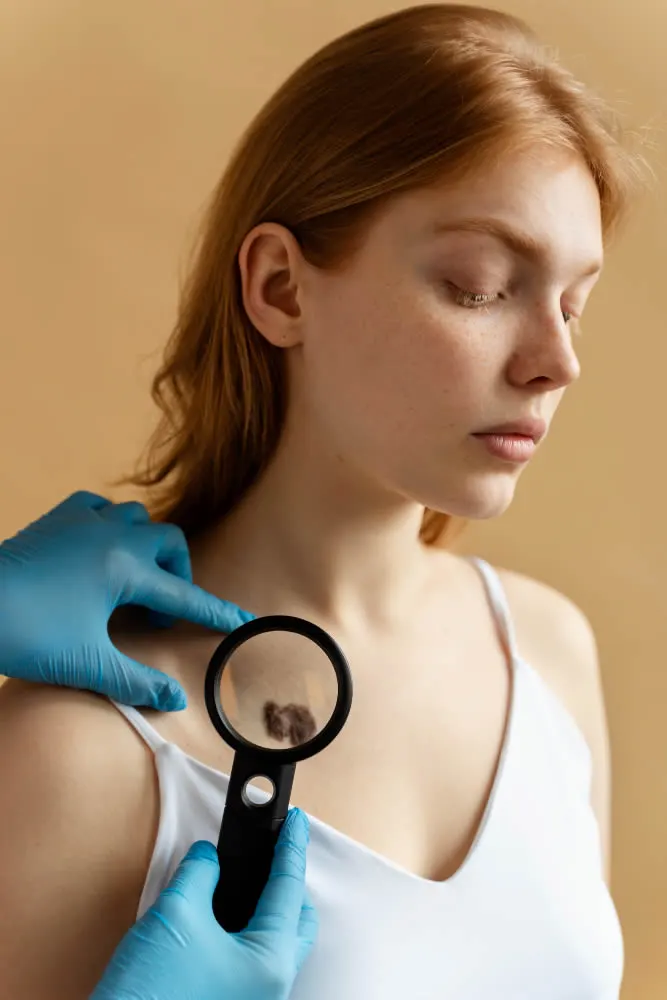What is Excisional Surgery?
Excisional surgery, also known as shave excision, is a surgical method used to eliminate skin growths like moles, masses, and tumors. This procedure involves extracting both the tumor and the surrounding healthy tissue.
In cases of skin cancer, the dermatologist will employ this technique by using a scalpel or razor to excise the tumor. After the tissue is removed it might be sent to a laboratory for further analysis.

Benefits of Excisional Surgery
Opting for a surgical excision to treat skin cancer offers a range of benefits that contribute to its popularity as a treatment choice. This method boasts cure rates that are on par with alternative skin cancer treatments. Moreover, the procedure’s efficiency shines through as it requires less time than other treatment options.
By choosing surgical excision, patients are securing a reliable avenue for addressing skin cancer with outcomes that align with alternative approaches. Additionally, the expedited nature of the procedure ensures that patients spend less time in the treatment process, allowing them to focus on recovery and restoration.
When should you consider Excisional Surgery?
- Melanoma Cases: Surgical excision is often the necessary step if you’ve received a melanoma diagnosis following a skin biopsy. This procedure ensures the complete removal of the cancerous tumor. For individuals with thin melanomas, a surgical excision offers a high likelihood of cure.
- Low-Risk Basal Cell and Squamous Cell Carcinomas: Patients with low-risk basal cell or squamous cell carcinomas are often ideal candidates for excisional surgery. This method effectively eliminates these cancer types, offering reliable results.
- High-Risk Basal Cell and Squamous Cell Carcinomas: In cases of higher risk basal or squamous cell carcinomas, surgical excision remains a viable treatment choice. However, these cancers carry a higher likelihood of recurrence post-surgery. To combat this, surgeons opt for a thorough approach, removing wide margins of healthy tissue along with the malignant tumor.
- Comprehensive Treatment: In certain situations, the surgeon might perform a real-time cell examination during the surgery to confirm the removal of all abnormal cells. This meticulous approach guarantees a comprehensive treatment outcome.
While considering excisional surgery, remember that your dermatologist will assess your health, the type and stage of cancer, and other relevant factors to make the most suitable treatment recommendation. Ultimately, choosing excisional surgery signifies taking proactive measures towards addressing skin cancer with precision and efficacy.
Recovery from a Surgical Excision
After undergoing surgical excision, recovery involves specific steps to ensure optimal healing and well-being. If your dermatologist suspects the growth is cancerous, a sample will be sent for examination by a pathologist.
Before departing the clinic, your dermatologist will provide detailed post-operative instructions, including:
- Maintaining Dryness: Keep the excision site dry for the first 24 hours to promote healing.
- Bandage Care: Following your dermatologist’s guidance, learn how to remove or change your bandage properly.
- Sunlight Protection: Ensure the site is covered when exposed to sunlight to prevent unwanted complications.
- Pain Management: Your doctor will advise you on suitable pain relief options.
- Antibiotic Ointment: Applying antibiotic ointment aids in the healing process.
Expect the treated area to appear red and inflamed for about a month, gradually lightening as time goes on. Look for signs of infection or severe pain, and promptly contact your dermatologist. Diligently adhering to post-operative care instructions, your recovery from excisional surgery can proceed smoothly and effectively.

FAQ About Excisional Surgery
Will I experience pain after the surgery?
Some discomfort is normal after the surgery. Your doctor will provide pain management guidelines, which might include over-the-counter pain relievers or prescribed medications.
Will I need follow-up appointments after the surgery?
Yes, follow-up appointments are crucial to monitor your healing progress and ensure there are no complications. Your doctor will let you know the recommended schedule for these visits.
Can I prevent scarring after Excisional Surgery?
While some scarring is normal, your dermatologist will use techniques to minimize scarring. Proper wound care and following post-operative instructions can also help reduce the appearance of scars over time.
Can I undergo Excisional Surgery if I have multiple growths?
Yes, excisional surgery can be used to remove multiple growths, provided they are suitable candidates for this approach. Your doctor will evaluate each case individually to determine the best course of action.

